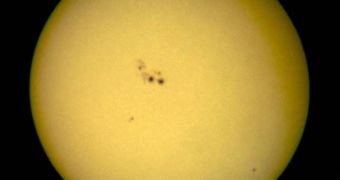For a long time, astronomers have known that the Sun passes through 11-year activity cycles, in which periods of high and low activity can be recorded. However, up until now, there have been few cycles in which the star failed to become active when it was time to, such as it happens now. According to predictions, since the beginning of 2009, many more sunspots and solar flares should have been identified on its surface, but only mild signs have been recorded. Now, astronomers at the National Solar Observatory (NSO) in Tucson, Arizona, believe they may have found out why.
They say that the magnetic phenomenon called solar jet streams is to be held responsible for this delay in the Sun's response time. These streams are generated at the poles of the star, and then travel towards the Equator at a relatively low speed of ten kilometers per hour. When their journeys take them to 22 degrees latitude North and South, they seem to have the ability to mark the beginning of a new solar cycle. But exactly why the cycle starts when the streams reach this precise latitude is still unknown.
In any case, the NSO researchers believe that the reason why the latest cycle of the Sun was delayed is the fact that the jet streams, which travel underneath the star's surface, moved slower than usual. That is to say, those generated in 1996 took 13 years to reach the 22-degree-latitude mark, and to trigger a new period of activity, rather than the regular 11 years. The new research was conducted by NSO scientist Frank Hill and colleague Rachel Howe, who used a technique known as helioseismology.
Invented in the mid-1990s, helioseismology is an observational method that allows astronomers to peer at the events that happen under the surface of the Sun, in very much the same way a seismograph allows experts to record the movements of the ground during earthquakes back on our planet. “It's now under way. We are going to rise to the solar maximum in the next few years,” Hill told reporters recently, ScienceNow informs.

 14 DAY TRIAL //
14 DAY TRIAL //